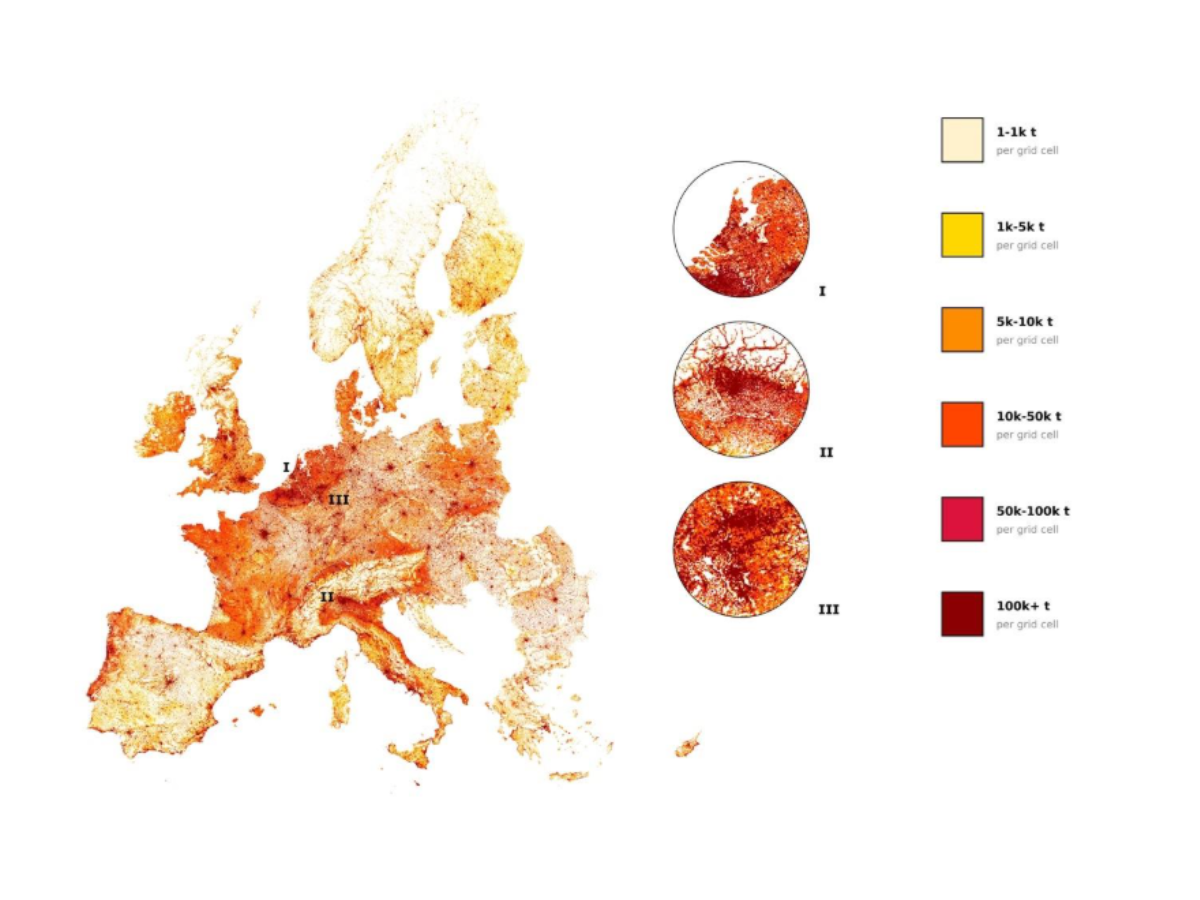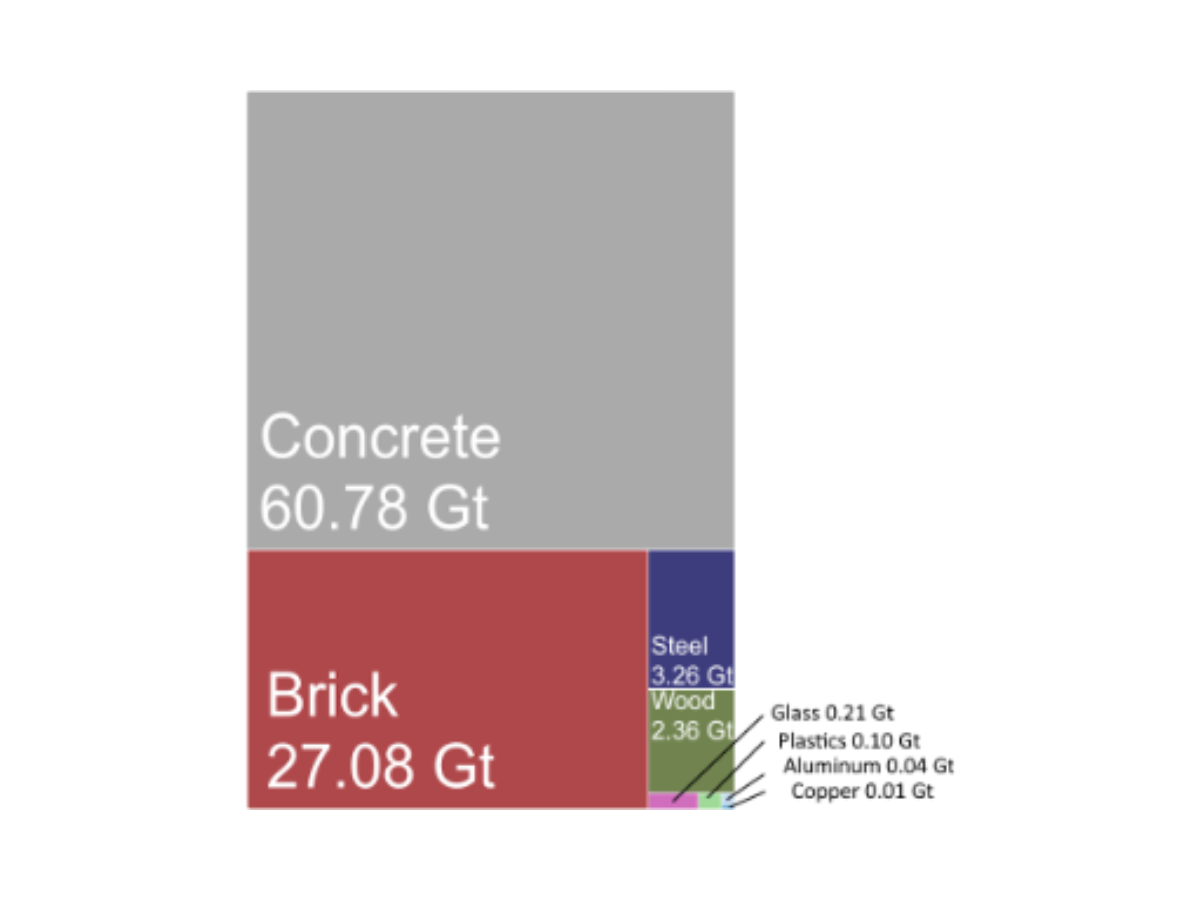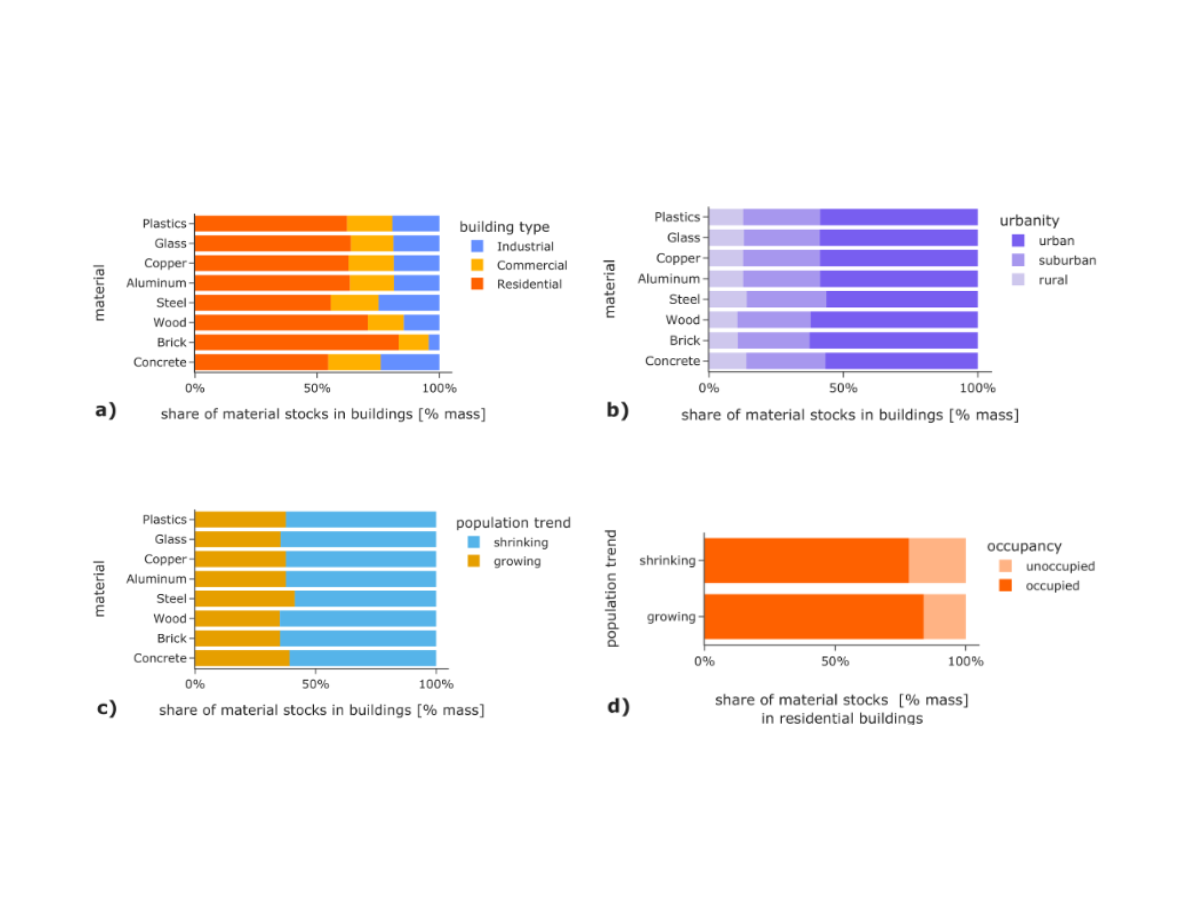
Figure 1 Material stocks in buildings across the EU27, Norway, Switzerland and the UK.
A new report from TU Berlin, PIK, NTNU and BOKU reveals the composition and location of Europe’s massive material stock in buildings, transport infrastructure and vehicles across the EU27, Norway, Switzerland, and the UK.
For buildings, this ongoing research combines governmental cadastral data, crowdsourced OpenStreetMap information, and satellite imagery through the EUBUCCO database to map material stocks at building-level resolution. The findings show that concrete dominates building material stocks at 65% of total mass, followed by bricks (29%), with wood and steel each around 3%. While metals, glass, plastics, aluminum, and copper represent less than 0.03% by mass, their high embodied carbon makes them critical targets for recovery.
For circularity practitioners and policymakers, this granular data transforms the question from “how much material exists?” to “where exactly is it, and how can we access it?”

Figure 2 Material composition of the building material stock in the EU27 + Norway, Switzerland and the UK.
The geographic distribution reveals a fundamental challenge: most building materials reside where people are leaving, not where they’re going.
While urban centers contain the highest concentrations—the Netherlands, Po Valley, and German cities stand out clearly—the majority of building stocks sit in regions projected to face population decline through 2060. Already, 22% of residential material stocks in shrinking regions remain unused due to vacancy, and even growing regions have 16% unoccupied. Rural and suburban areas show 61% higher material intensity per capita than cities, reflecting larger buildings, industrial facilities, and abandonment.
This mismatch complicates circular economy pathways: “should we develop systematic disassembly systems to relocate materials, or implement adaptive reuse policies for place-based solutions?”

Figure 3 Distribution of building material stocks by a) functional type of building, b) degree of urbanization of the 1km grid cell, c) expected regional population trend from 2020 to 2060 in the NUTS3 region, and d) occupancy status of residential buildings in the NUTS3 region.
The material diversity across Europe demands regionally tailored strategies. Wood dominates Scandinavia, Alpine regions, and parts of Eastern Europe, while bricks prevail in Ireland, the UK, Denmark, and Portugal. Concrete and steel concentrate in Western European urban areas and major Eastern European cities. For sustainability consultants, these patterns indicate that circular economy interventions cannot follow one-size-fits-all approaches—Scandinavian wood recovery strategies won’t translate to British brick contexts.
As this study advances toward publication, it provides the evidence base needed to design geographically specific circularity policies that account for local construction practices, demographic trends, and occupancy patterns—moving beyond national averages toward actionable, place-specific urban mining and material stewardship strategies.
